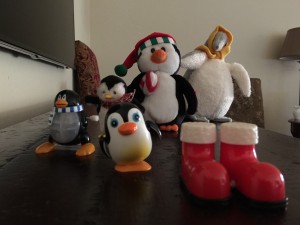“Do exactly as I tell you,” Albus Dumbledore, the Headmaster of Hogwarts School of Witchcraft and Wizardry, tells Harry Potter before the confrontation with the Dark Lord’s Death Eaters. The sixteen-year-old Harry follows his mentor’s instructions. What happens next was the matter of great wager and odds making before the original book by J. K. Rowling was released in July of 2005. What would happen to Albus? Nine million copies of the book and its secrets were sold in the first 24 hours after the manuscript hit the store shelves, and the following movie in 2009 was closely followed and remains one of the most acclaimed of the series.
Of that, I am in agreement.
Year Six is Harry’s penultimate year at school. You may recall that wizards and witches attend to their studies for seven years before attending to their business. In this Harry’s sixth year, there is much happening, as there has been for each of the first five years, but these happenings impact many more people and things, muggles and magical folk alike, and in a much darker and lasting way. This is a very serious show.
And, it is funny.
That was a surprise. The laughter and lament of young love is present and with a light, fanciful, endearing, sad, silly and entertaining touch that is both good scripting and good directing. I think this film is the best so far. In the midst of the swirl and foreboding of darker times ahead, resolve bobs its head above the black waters and unites Harry with his school mates to face together the uncertain future.
Harry Potter is not alone.
We often take light in our heads and conversations about the need for companionship. These are the days of Clint Eastwood and the majestic unforgiven cowboy who survives every gunfight and rides off alone into the sunset at fim’s end. These are the times of Mel Gibson and the mad warrior whose brave heart and iron will unite those around him and vanquish those ahead until at battle’s end, we bid him a lone farewell. These are the great stories of strong lonely souls who inhabit our era’s shows. I am sure there is truth in all these figures and in their stories. I think less likely the lonely myth they suggest.
We work best together.
J. K. Rowling may say she wrote her novels about death. I think she wrote of life and friendship. Those are, to this point and to my thought, the main and predominant themes. There is little, I think, unconsidered in the author’s determination to progress an ordered plot, and, of certain, there is a deep and deadly dark that faces Harry and his friends, but the seriousness of life’s end is lightened and encouraged at every bend by the author’s joy in the pranks of her children and friends, whatever their ages and roles and ends. One cannot help but notice the ever-joining closeness of those who choose the right path. Yes, the end of all is fixed, but not the journey or how it is to be taken. Harry Potter and his novels are a testament not to go that last way alone.
Next is what happens next.
Uncertainty can often lead to certainty.
Harry, by his choices, may have already made his ending.
For that, let us now turn to Year 7 and the two separate shows yet to be seen.
Good viewing,
Grandpa Jim


